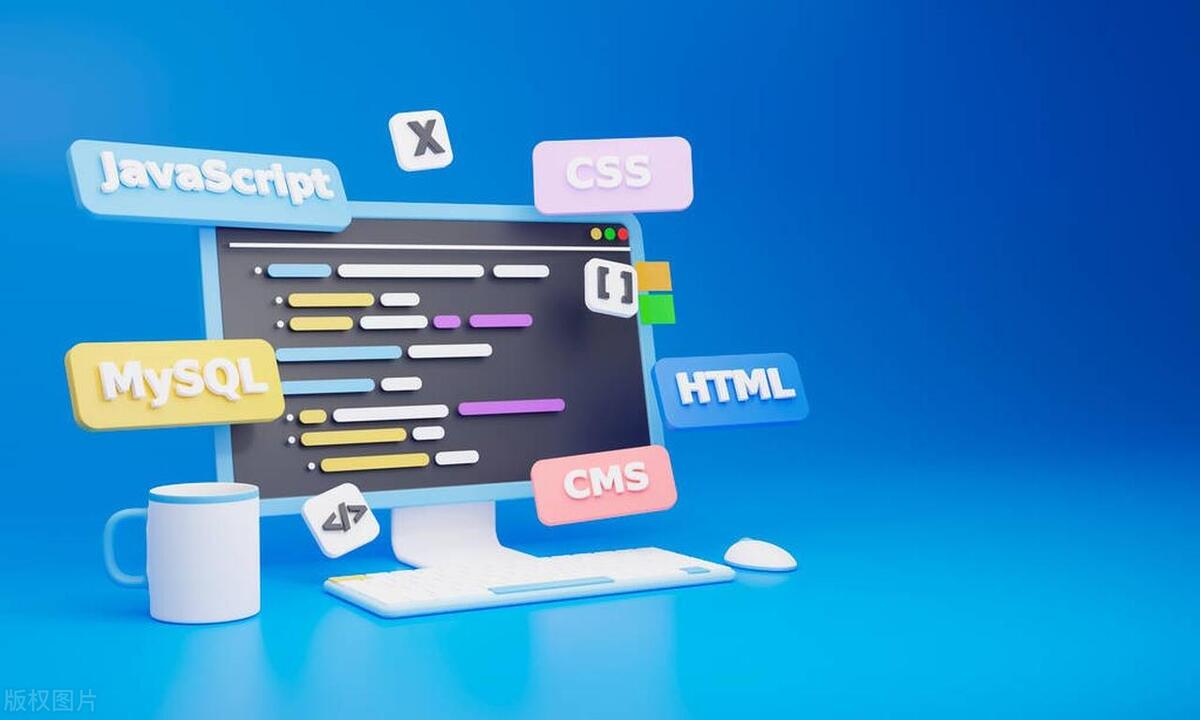Cypress is a modern and efficient front-end end-to-end testing framework suitable for E2E testing. It runs directly in the browser, which is faster to respond and more convenient to debug. Before use, you need to install Node.js and npm, and then install it through the command npm install cypress --save-dev, and the graphical interface can be started through npx cypress open. The file structure will be automatically generated for the first time. It is recommended to write common commands into the scripts of package.json for call. When writing test cases, each file is placed under cypress/e2e with suffixed with .cy.js or .cy.ts. A simple login test includes accessing pages, filling in forms, clicking to submit and verifying jump URLs. Cypress provides chained APIs such as cy.visit(), cy.get(), .type(), .click() and assertion methods. During debugging, you can use the Cypress interface to view the operation records and DOM status. Common failure causes include elements not loading, selector unstable, or page jumping is not waiting for confirmation. You can use cy.wait(), cy.intercept() and semantic properties such as data-cy. For example, after clicking the button, wait for the interface request to complete and then assert the URL: first intercept the request and name it, click the button, wait for the request to complete, and then verify the URL. As the number of tests increases, the file structure should be organized according to the functional modules, such as login.cy.js, dashboard/overview.cy.js, etc. Cypress executes all .cy.js files by default, or runs a specific file or directory through the --spec parameter. When writing a good test, you need to pay attention to details, such as using the waiting mechanism rationally, maintaining highly readable selectors, avoiding hard-coded data, etc.

End-to-end testing of front-end applications is a key step to ensure that the product runs stably under real user operations. As a modern and efficient testing framework, Cypress is especially suitable for E2E testing. It does not rely on network communication like traditional Selenium, but runs directly in the browser, which is faster to respond and more convenient to debug.

If you are just starting to get involved in Cypress, you may feel that its structure and writing are a bit different. In fact, as long as you master a few key points, you can quickly get started and write stable and reliable test cases.
Installation and Initialization
Before using Cypress, make sure that Node.js and npm are installed in the project. Then run it in the project root directory:

-
npm install cypress --save-dev
After the installation is completed, the graphical interface can be started through npx cypress open . The basic file structure is automatically created during the first run, including the cypress/e2e directory and sample test files.
If you want to skip the graphical interface and run all tests directly, you can use:

-
npx cypress run
It is recommended to write common commands into the scripts of package.json , for example:
"scripts": {
"test:e2e": "cypress run",
"test:e2e:open": "cypress open"
}This makes subsequent calls much more convenient.
Write the first E2E test case
Cypress uses JavaScript or TypeScript to write test scripts, with concise and intuitive syntax. Each test file is usually placed under cypress/e2e with the suffix of .cy.js or .cy.ts .
One of the easiest login process tests might look like this:
describe('Login Flow', () => {
it('should successfully log in with valid credentials', () => {
cy.visit('/login');
cy.get('#email').type('user@example.com');
cy.get('#password').type('password123');
cy.get('button[type="submit"]').click();
cy.url(). should('include', '/dashboard');
});
});This code does a few things:
- Open
/loginpage - Fill in the email and password in the input box
- Click the Submit button
- Check if the URL jumps to
/dashboard
Cypress provides a chained API, such as cy.get() to get elements, .type() to input content, .click() to trigger clicks, all of which are easy to understand and use.
Debugging and failure handling skills
One of the biggest advantages of Cypress is its own debugging tool. When you run the test with cypress open , the left side will display the operation record of each step, and the right side will be the page rendered in real time. Click a certain step to view the DOM status at that time, which is very convenient for troubleshooting problems.
Common causes of failure include:
- The element is not loaded and executed (can be processed with
cy.wait()orcy.intercept()) - The selector is inaccurate or changes frequently (it is recommended to use semantic properties such as
data-cy) - Page jump is not waiting for confirmation (add
cy.url().should(...)assertion)
For example, if a button needs to request an interface to jump after clicking, you can wait for it to complete:
cy.intercept('POST', '/api/login').as('loginRequest'); cy.get('button[type="submit"]').click(); cy.wait('@loginRequest'); cy.url(). should('include', '/dashboard');
This can avoid assertion failure due to network delay.
How to organize multiple test files
As the number of tests increases, it becomes important to organize test documents reasonably. You can divide directories by functional modules, such as:
cypress/e2e/
├── login.cy.js
├── dashboard/
│ ├── overview.cy.js
│ └── settings.cy.js
└── profile/
└── edit-profile.cy.js Cypress will recursively search and execute all .cy.js files by default. You can also run only certain folders or files by configuring, for example:
-
npx cypress run --spec "cypress/e2e/login.cy.js"
Or use wildcards:
-
npx cypress run --spec "cypress/e2e/dashboard/*.cy.js"
This allows for flexible control of the test range in CI/CD.
Basically that's it. Cypress is not difficult to get started, but if you want to write a good test, you still have to pay attention to the details, such as using the waiting mechanism rationally, maintaining highly readable selectors, and avoiding hard-coded data. By doing this well, your front-end applications can be delivered to users with more confidence.
The above is the detailed content of End-to-End Testing with Cypress for Frontend Applications. For more information, please follow other related articles on the PHP Chinese website!

Hot AI Tools

Undress AI Tool
Undress images for free

Undresser.AI Undress
AI-powered app for creating realistic nude photos

AI Clothes Remover
Online AI tool for removing clothes from photos.

Clothoff.io
AI clothes remover

Video Face Swap
Swap faces in any video effortlessly with our completely free AI face swap tool!

Hot Article

Hot Tools

Notepad++7.3.1
Easy-to-use and free code editor

SublimeText3 Chinese version
Chinese version, very easy to use

Zend Studio 13.0.1
Powerful PHP integrated development environment

Dreamweaver CS6
Visual web development tools

SublimeText3 Mac version
God-level code editing software (SublimeText3)
 How does React handle focus management and accessibility?
Jul 08, 2025 am 02:34 AM
How does React handle focus management and accessibility?
Jul 08, 2025 am 02:34 AM
React itself does not directly manage focus or accessibility, but provides tools to effectively deal with these issues. 1. Use Refs to programmatically manage focus, such as setting element focus through useRef; 2. Use ARIA attributes to improve accessibility, such as defining the structure and state of tab components; 3. Pay attention to keyboard navigation to ensure that the focus logic in components such as modal boxes is clear; 4. Try to use native HTML elements to reduce the workload and error risk of custom implementation; 5. React assists accessibility by controlling the DOM and adding ARIA attributes, but the correct use still depends on developers.
 Describe the difference between shallow and full rendering in React testing.
Jul 06, 2025 am 02:32 AM
Describe the difference between shallow and full rendering in React testing.
Jul 06, 2025 am 02:32 AM
Shallowrenderingtestsacomponentinisolation,withoutchildren,whilefullrenderingincludesallchildcomponents.Shallowrenderingisgoodfortestingacomponent’sownlogicandmarkup,offeringfasterexecutionandisolationfromchildbehavior,butlacksfulllifecycleandDOMinte
 What is the significance of the StrictMode component in React?
Jul 06, 2025 am 02:33 AM
What is the significance of the StrictMode component in React?
Jul 06, 2025 am 02:33 AM
StrictMode does not render any visual content in React, but it is very useful during development. Its main function is to help developers identify potential problems, especially those that may cause bugs or unexpected behavior in complex applications. Specifically, it flags unsafe lifecycle methods, recognizes side effects in render functions, and warns about the use of old string refAPI. In addition, it can expose these side effects by intentionally repeating calls to certain functions, thereby prompting developers to move related operations to appropriate locations, such as the useEffect hook. At the same time, it encourages the use of newer ref methods such as useRef or callback ref instead of string ref. To use Stri effectively
 Server-Side Rendering with Next.js Explained
Jul 23, 2025 am 01:39 AM
Server-Side Rendering with Next.js Explained
Jul 23, 2025 am 01:39 AM
Server-siderendering(SSR)inNext.jsgeneratesHTMLontheserverforeachrequest,improvingperformanceandSEO.1.SSRisidealfordynamiccontentthatchangesfrequently,suchasuserdashboards.2.ItusesgetServerSidePropstofetchdataperrequestandpassittothecomponent.3.UseSS
 A Deep Dive into WebAssembly (WASM) for Front-End Developers
Jul 27, 2025 am 12:32 AM
A Deep Dive into WebAssembly (WASM) for Front-End Developers
Jul 27, 2025 am 12:32 AM
WebAssembly(WASM)isagame-changerforfront-enddevelopersseekinghigh-performancewebapplications.1.WASMisabinaryinstructionformatthatrunsatnear-nativespeed,enablinglanguageslikeRust,C ,andGotoexecuteinthebrowser.2.ItcomplementsJavaScriptratherthanreplac
 Vue CLI vs Vite: Choosing Your Build Tool
Jul 06, 2025 am 02:34 AM
Vue CLI vs Vite: Choosing Your Build Tool
Jul 06, 2025 am 02:34 AM
Vite or VueCLI depends on project requirements and development priorities. 1. Startup speed: Vite uses the browser's native ES module loading mechanism, which is extremely fast and cold-start, usually completed within 300ms, while VueCLI uses Webpack to rely on packaging and is slow to start; 2. Configuration complexity: Vite starts with zero configuration, has a rich plug-in ecosystem, which is suitable for modern front-end technology stacks, VueCLI provides comprehensive configuration options, suitable for enterprise-level customization but has high learning costs; 3. Applicable project types: Vite is suitable for small projects, rapid prototype development and projects using Vue3, VueCLI is more suitable for medium and large enterprise projects or projects that need to be compatible with Vue2; 4. Plug-in ecosystem: VueCLI is perfect but has slow updates,
 How to manage component state using immutable updates in React?
Jul 10, 2025 pm 12:57 PM
How to manage component state using immutable updates in React?
Jul 10, 2025 pm 12:57 PM
Immutable updates are crucial in React because it ensures that state changes can be detected correctly, triggering component re-rendering and avoiding side effects. Directly modifying state, such as push or assignment, will cause React to be unable to detect changes. The correct way to do this is to create new objects instead of old objects, such as updating an array or object using the expand operator. For nested structures, you need to copy layer by layer and modify only the target part, such as using multiple expansion operators to deal with deep attributes. Common operations include updating array elements with maps, deleting elements with filters, adding elements with slices or expansion. Tool libraries such as Immer can simplify the process, allowing "seemingly" to modify the original state but generate new copies, but increase project complexity. Key tips include each
 Security Headers for Frontend Applications
Jul 18, 2025 am 03:30 AM
Security Headers for Frontend Applications
Jul 18, 2025 am 03:30 AM
Front-end applications should set security headers to improve security, including: 1. Configure basic security headers such as CSP to prevent XSS, X-Content-Type-Options to prevent MIME guessing, X-Frame-Options to prevent click hijacking, X-XSS-Protection to disable old filters, HSTS to force HTTPS; 2. CSP settings should avoid using unsafe-inline and unsafe-eval, use nonce or hash and enable reporting mode testing; 3. HTTPS-related headers include HSTS automatic upgrade request and Referrer-Policy to control Referer; 4. Other recommended headers such as Permis






